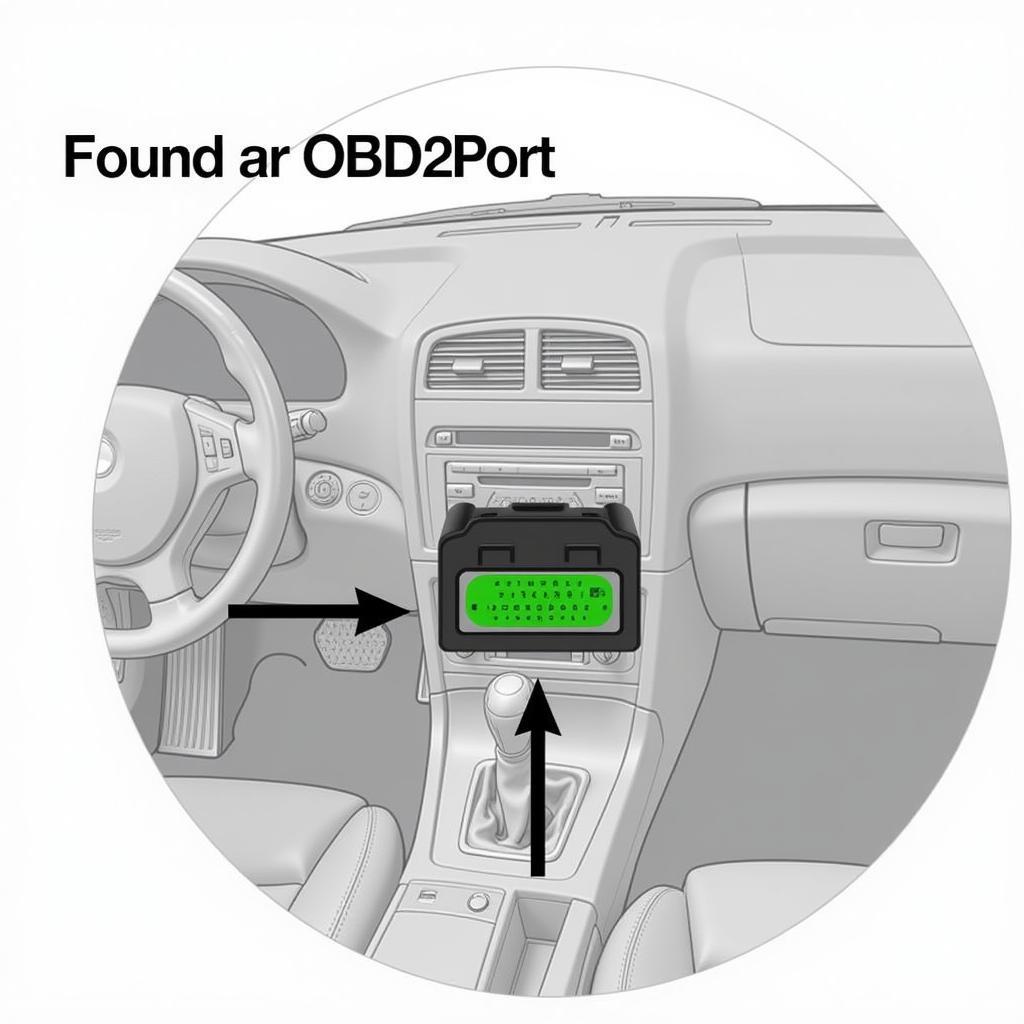The dreaded E46 brake light warning – a beacon of worry for many BMW owners. This little light on your dashboard can indicate a range of issues from minor wear and tear to more serious brake system problems. Understanding what triggers this warning and how to address it is crucial for your safety and maintaining your vehicle’s performance.
This comprehensive guide will delve into the common causes behind the E46 brake light warning and provide you with the knowledge needed to diagnose and fix the issue, whether you’re a seasoned DIY mechanic or prefer the expertise of a professional.
Understanding Your E46 Brake Warning System
The E46 brake warning system is designed to alert you to potential problems within your braking system. This is achieved through various sensors that monitor components like brake fluid levels, brake pad wear, and the overall functionality of the system.
When the system detects an anomaly, it triggers the brake warning light on your dashboard. While this warning light can be unsettling, it’s important to remember that it’s there to keep you safe by providing an early indication of a potential problem. Ignoring it could lead to more serious and costly repairs down the line.
Common Causes of the E46 Brake Light Warning
There are several reasons why your E46 brake light might be on. Let’s explore the most common culprits:
1. Worn Brake Pads
“How do I know if my brake pads are worn?” This is one of the most frequent questions related to the E46 brake light warning. Over time, your brake pads, responsible for creating friction against the brake rotors to stop the car, naturally wear down. The E46 has wear sensors in the brake pads that trigger the warning light when they reach a certain minimum thickness.
2. Low Brake Fluid Level
Brake fluid is the lifeblood of your braking system, transmitting the force from your foot on the brake pedal to the calipers that engage the brakes. If the brake fluid level drops below a safe level, it can be due to a leak or worn-out brake components.
3. Faulty Brake Sensor
The brake sensors in your E46 play a critical role in detecting and relaying information about your brake system’s status. A malfunctioning sensor can send incorrect signals, leading to the brake light illuminating even if there isn’t an actual problem.
4. ABS Issues
The Anti-lock Braking System (ABS) is a crucial safety feature in your E46. If the ABS module or any of its components, such as wheel speed sensors, malfunction, it can trigger the brake warning light.
5. Brake Light Bulb Out
While less likely to cause a brake light warning on the E46 compared to older vehicles, it’s still worth checking if one of your brake light bulbs has burned out. A faulty bulb can sometimes disrupt the electrical circuit and lead to the warning light illuminating.
Diagnosing the E46 Brake Light Warning
Before you start replacing parts, it’s vital to pinpoint the exact cause of the warning light. Here’s a systematic approach:
- Check the brake fluid level: This is the easiest check. If the level is low, it suggests a leak or worn brake components.
- Inspect the brake pads: Examine your brake pads for wear and tear. You can often visually inspect them through the wheel spokes. If they look thin or you see metal scraping against the rotor, it’s time for a replacement.
- Scan for trouble codes: A professional mechanic or a code reader can help retrieve Diagnostic Trouble Codes (DTCs) stored in your car’s computer. These codes provide valuable insights into the potential cause of the warning light.
 E46 OBD2 Port Location
E46 OBD2 Port Location
Addressing the E46 Brake Light Warning
Once you’ve diagnosed the root cause, here’s how to address the most common issues:
- Brake Pad Replacement: Replacing worn brake pads is essential for maintaining optimal braking performance and safety. This is a relatively straightforward procedure for those comfortable with basic car maintenance. However, if you’re unsure, it’s best to seek professional help.
- Brake Fluid Flush and Refill: If the brake fluid is low, address any leaks and flush the old fluid with fresh brake fluid. Regular brake fluid flushes are recommended to maintain the system’s efficiency and prevent internal corrosion.
- Sensor Replacement: If a faulty sensor is the culprit, it will need to be replaced. This generally involves locating the faulty sensor, disconnecting it, and installing the new one. While this process is relatively straightforward, it’s crucial to ensure the new sensor is compatible with your E46 model.
When to Consult a Professional
While some E46 owners are comfortable performing basic brake maintenance, it’s essential to remember that the braking system is critical to your safety. If you’re unsure about any aspect of diagnosis or repair, it’s always best to consult a qualified mechanic.
Specifically, if the diagnosis points towards ABS issues or you suspect a problem beyond simple brake pad wear or fluid top-up, seeking professional help is crucial.
E46 Brake Light Warning: Prioritizing Safety and Performance
The E46 brake light warning is your car’s way of communicating a potential issue with the braking system. By understanding the common causes and taking the necessary steps for diagnosis and repair, you can ensure your E46 continues to deliver a safe and enjoyable driving experience.
Remember, a little preventative maintenance and prompt attention to warning signs can go a long way in ensuring the longevity and optimal performance of your BMW. For more specific information about E46 brake issues, explore these related articles:
- bmw e46 gear brake pad warning light
- bmw e46 brake warning light reset
- bmw e46 rear brake warning light
Addressing brake issues early not only saves you money in the long run but, more importantly, safeguards you and your passengers on the road.
